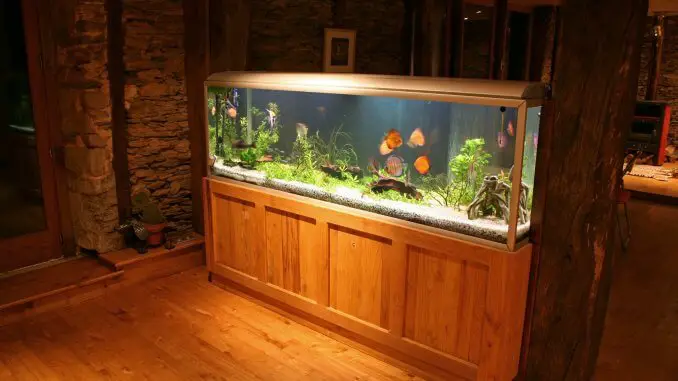
The 40-gallon tank is a wonderful choice for any experienced or beginner aquarist.
This volume allows you to keep many amazing fish, aquarium plants, and decorations. It is a well-rounded aquarium that is durable and offers great value.
It is surprisingly easy to maintain as long as you invest in quality equipment, and there are plenty of great setups that you can choose from with this tank.
If you are looking for a new tank and need some advice, keep on reading as we discuss all the pros and cons of owning a 40-gallon fish tank.
See also: Female Betta Fish
All About The 40 Gallon Aquarium
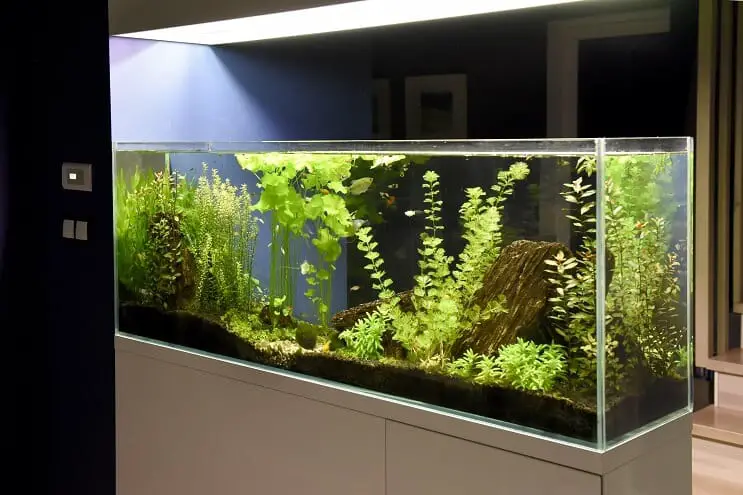
A 40-gallon aquarium is a fishkeeping hobby powerhouse.
With a tank this size, you can keep a huge variety of fish – it is a great starter tank and is also widely used commercially.
The great thing about these tanks is that they come in almost every imaginable form, whether it’s a panoramic hexagon or an ordinary rectangular tank.
Each shape manages to look original and beautiful – they will all let you look at your fish from every possible angle, though some are easier to maintain than others. For this reason, a classic rectangular tank is much easier to clean and usually is the go-to choice for many aquarists.
Angled tanks are mainly used in the corner of a room and are made to fit as neatly as possible. While it limits what you can do with the tank, it does save a lot of space.
This diversity does not stop at shapes. If you wish to breed fish at home, there is a specialized 40-gallon tank just for that – it is usually a bit taller than the standard version to allow breeding.
A 40-gallon aquarium lets you keep many wonderful medium-sized fish. You will also have the freedom to choose between marine and freshwater setups.
40 Gallon Fish Tank Equipment
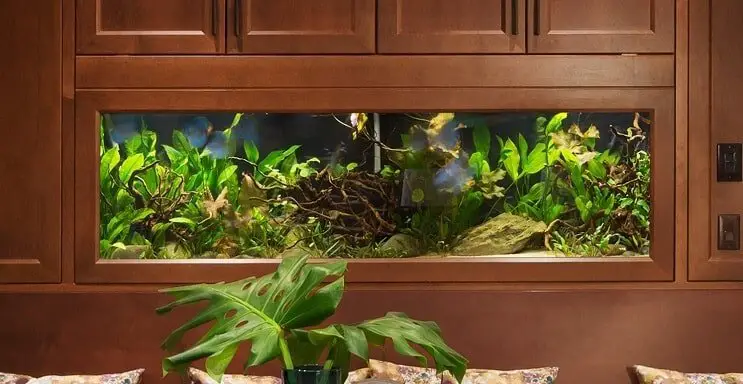
The environment in your aquarium is fragile and sensitive.
It can be affected by the slightest changes in chemical composition, temperature, or flow intensity. To make sure the water conditions remain stable, you will need the correct equipment.
Let’s look at the equipment you will need for this tank.
Filter
When you think of an aquarium, usually the first piece of equipment that comes to mind is the filter. As one of the building blocks of the tank, the filter helps keep the water aerated and creates a flow. This flow is important for aquatic animals and many stages of their lifecycle.
Choosing the right filter is the main step to recreating the natural environment.
To make sure that it functions properly there are a couple of things that you need to consider – for example, the size of your tank.
In order for it to function efficiently it must be capable of filtering all the water in the tank around 4 times per hour. You also need to look at the individual requirements of your inhabitants and figure out what flow suits them the most. Then you can choose the one that suits your budget.
Heater
The temperature is something that is often overlooked in the tank.
However, this is a very important aspect of the natural aquatic habitat. Nearly all animals can only survive within a limited temperature range. Sudden changes in the temperature will cause health complications.
In order to maintain the desired temperature conditions in the aquarium, you need a heater.
This simple device is connected to a power source and keeps the water at a set temperature.
Many modern heaters also have a thermostat installed, which automatically switches the power off when the required temperature has either been reached or exceeded.
Read this Article: Pygmy Cory: Size, Tank Mates, Care, and More…
Lights
Another very important aspect in the aquatic world is the lighting.
It determines how quickly fish, plants, and even bacteria in your tank grow. While live plants rely on lighting to photosynthesize, fish and other animals depend on it for stable daylight cycles.
Lack of light will cause your fish health problems. However, if there is too much light in the tank, algae will start growing and will spread quickly.
Other Equipment
With this tank, there are a couple of other useful pieces of equipment you might need.
An aquarium stand is a must for a tank this size. It will not only provide enough space to conveniently organize and keep your plumbing or any other equipment but will also offer increased stability.
You may also want to consider some of the smaller but nevertheless important pieces of equipment such as gravel cleaners, magnetic sponges or automated feeders.
All of them will improve the quality of life in the tank and will save you lots of time.
What Fish Can You Keep In A 40 Gallon Tank (Stocking Ideas)
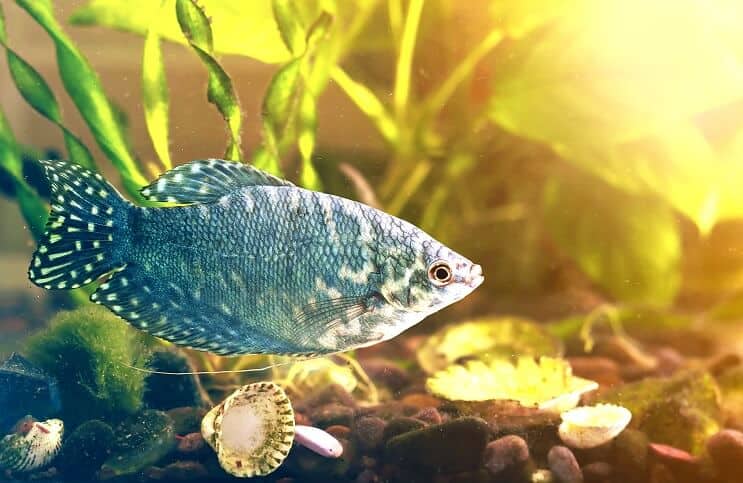
This tank has a pretty large list of species that it can host, some of the most popular fish that you can keep include:
| Fish | Description |
| Guppies | A favorite of many aquarists and a great beginner fish. In this tank you will be able to keep 20-30 of them. These colorful little fish are really active, but also very peaceful and need to be kept in groups of at least 6. |
| Cory Catfish | These lovely small fish are not only entertaining but can bring real value to your aquarium. They will help you keep the tank clean by taking care of the algae (it is their favorite snack). You can fit as many as 10 of them in a 40 gallon tank. |
| Banggai Cardinalfish | An incredibly beautiful and unique addition to any saltwater aquarium, these fish have a very peaceful temperament that is so desirable in many community species. You can keep 15-20 of them in 40 gallons. |
| Betta | These extravagant fish are beautiful, active and hardy. They are quite aggressive and males should be kept on their own. |
| Zebrafish | With their vivid appearance and almost endless diversity they should not be overlooked. You can keep around 20 in a 40 gallon tank. |
| Convict Cichlid | This large fish is very active but loves to spend most of their time hiding in crevices or under rocks. You can only fit 2-3 of them in this tank. |
| Mollies | These beautiful fish never stop to impress despite their relatively modest size. The Molly is an interesting fish whose energetic behavior in the tank will keep you entertained for a long time. You can keep 15-20 of them in a tank of this volume. |
| Goldfish | Perhaps the most iconic fish in the world, this shining beauty is a dream for every fishkeeping enthusiast. Depending on the types of goldfish in question, you might be able to keep two of them in this tank. You will only be able to keep one of the fancy goldfish breeds. |
| Three Spot Gourami | A fish that masterfully combines an unusual shape with its original appearance, the gourami is a fish that every owner of a 40-gallon tank should definitely consider. You should be able to keep up to 10 of them in this volume. |
40 Gallon Tank Setup Ideas
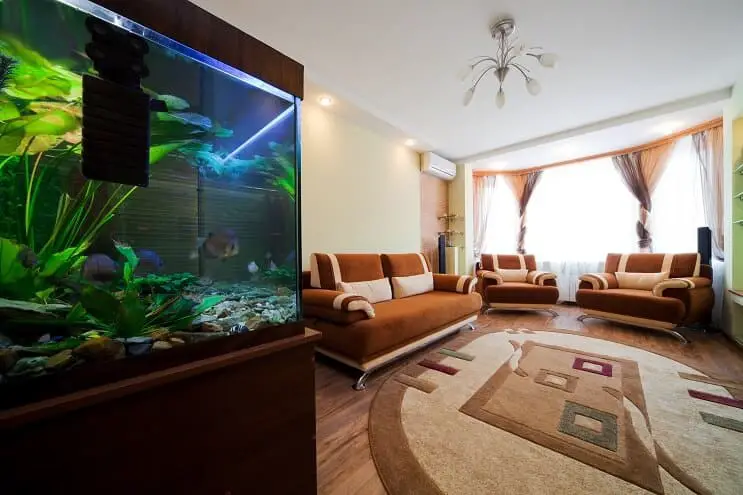
A 40-gallon aquarium gives you a lot of creative freedom by allowing you to recreate almost any setup that you can think of.
One of the most popular choices is a community tank. It lets you keep much fascinating colorful fish of different sizes alongside beautiful live plants.
You can also add decorations and design the tank as you please.
An example of a great community setup for a 40-gallon tank would be:
Another setup that you might consider is a species-only tank, like in the case of some Cichlids.
Although it may not seem very exciting at first, the best thing about this setup is how clean the tank looks with only a few fish swimming around.
You could include either a group of Firemouth Cichlids, a group of Peacock Cichlids, or a group of Dwarf Cichlids.
You could also consider a paludarium – 50/50 tank with half of it being made up by terrestrial plants. This is a less popular option but something that is undoubtedly very unique and definitely deserves a shot.
Ideal species for a paludarium include Celestial Pearl Danios, Mollies, and Guppies.
How to Setup a Fish Tank
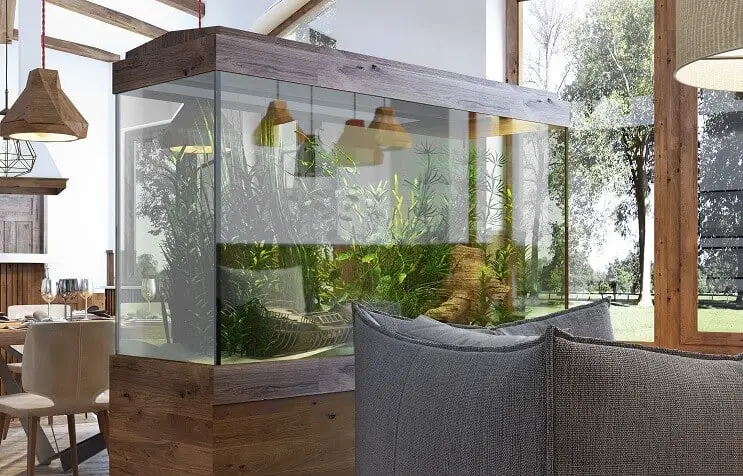
Step 1: Tank and Equipment Setup
Setting up a tank is pretty simple. The first thing that you would need to place in your tank is the substrate. This forms the base layer of your aquarium and becomes a foundation for everything else that is in there.
Before laying down the substrate you need to thoroughly clean it to wash out all the dust.
Once that is done, spread it equally across the base of the aquarium. Depending on what plants you have, you may want to create a small slope to help their roots acclimatize faster.
Next, you need to install all your equipment to make sure that the water is well looked after. A good circulation in the tank equals a prosperous healthy environment.
The exact installation process will depend on the type of tool you use (internal or external filter, heater model, etc.).
Once your equipment is connected, you can start filling the tank with water.
Lastly, you can add the decorations, plants or anything else that you may have. It is very important to do everything in moderation when it comes to decorating your aquarium. You would not want to flood it with excessive décor and stress out your fish.
Leave enough free space for your fish to swim around without bumping into the rocks. A safe ratio to follow is 30/70: with 30% being the space in the tank that is filled with decoration.
Step 2: Cycling The Tank
Establishing a good water cycle from the very beginning is absolutely crucial to ensure that your fish stay healthy and plants grow strong.
Cycling your tank is a natural process that will take around 4-8 weeks. During this process, a beneficial bed of bacteria will build up which will help to break down toxic compounds such as ammonia and nitrites, into less harmful compounds like nitrates.
If you want to track the cycling process, you can buy a test kit and you will be able to see a peak in the ammonia and nitrites followed by a drop. Once those to parameters drop to zero, and the nitrates are as close to 0 as possible, you can add your fish.
Step 3: Adding Fish
This may seem like something that does not even require explanation but there are some things that you should be aware of.
When fish arrive in the store they are usually very stressed out because in most cases they have been transported some distance.
To avoid stressing out your fish even further you need to make the transition to their new aquarium as smooth as possible.
Allow the bag to float in the aquarium for around 20-30 minutes, and then add a cup of water to the bag every 10 minutes. Once the bag is full, use a net to remove the fish and add them to the water. You can then discard the water in the bag.
Summary
Picking the right tank can be challenging and frustrating.
There is just so much choice and it can be hard to pick one size, especially if you do not have any experience.
Thankfully, the 40-gallon aquarium is an amazing medium-sized tank that allows you to keep a lot of beautiful species.
It can be home for almost any kind of setup without taking up too much space in your home.
Do you have a 40-gallon aquarium? Let us know in the comments section below…

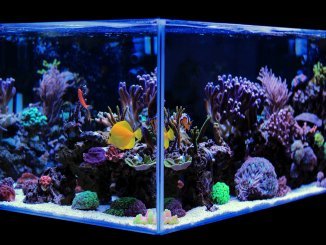
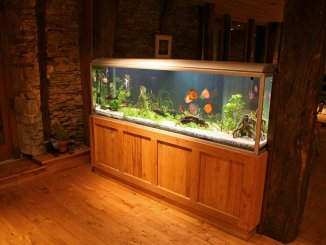
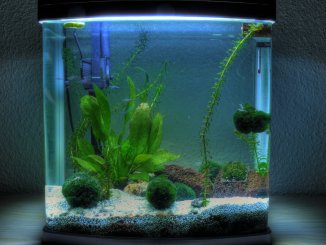
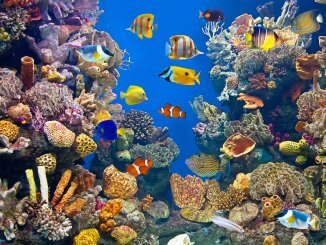
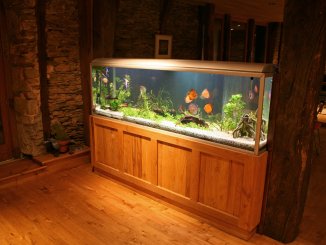
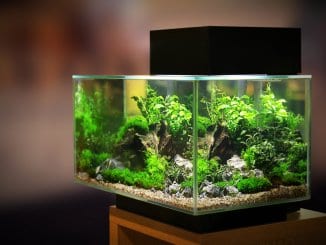
We currently have a 40 gallon long and it houses 1 firemouth, 1 angel fish, 1 rainbow shark, a bristlenose and 3 tetras. Everyone gets along fairly well but they are not fully grown yet so time will tell. Our next tank that is nearly ready for inhabitants is a 55 gallon and we want to do African cichlids.
Overstocked I fear? 5 rainbow shiners, 5 pygmy loach 12 cloud minnows, 5 neon tetra, 4 zebra nano,1 bristle nose plec, 5 zebra tetra. In a well planted 50 gallon tank. I carry out a 20 gallon weekly water change,prune plants and clean impeller and sponge. There is a thriving colony of shrimp.
Morning Robert. I want to start breeding with show guppies. Can you perhaps give me some info how to start breeding them. Thanks Japie.
Hi Japie, thanks for your question. You’ll be able to find information on breeding Guppies here: https://www.fishkeepingworld.com/guppies/ Thanks, Robert
I have a 40gal long. All Cichlids ranging from about 3-7 in. I use a canister filter with a sponge filter for improved bacteria growth. I change the polishing filter weekly to maintain maximal flow through the filter. Airstones provide proper water movement. I chose Chiclids because my tap water is around pH 7.8-8.0
Hello Robert,
on this site when you refer to the volume of aquariums in gallons, what is it in litres? Are you using UK or US gallons?
Thanks!
Im looking to setup a 40 galloon tank and i want to know how long i should have my tank setup before actually introducing fish to the tank. I would also like to know the best schooling fish and any other fish that you recommend thatll be interesting to 6 yr olds.
Hi, I have a 40 gallon tank edits almost finished, being cycled and I want to add some fish. My mom really likes neon tetras and I’m planning on adding some snails. Are there any other fish that you guys recommend me adding, and how many of each should I add?
I want to have mainly neon tetras in my 40 gal. How many could i fit in a 40 gal comfortably, and what other small fish would go well with tetras?